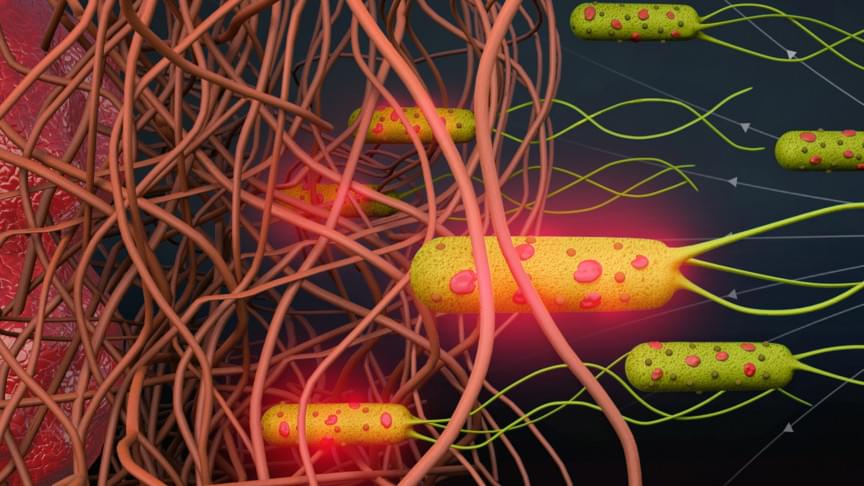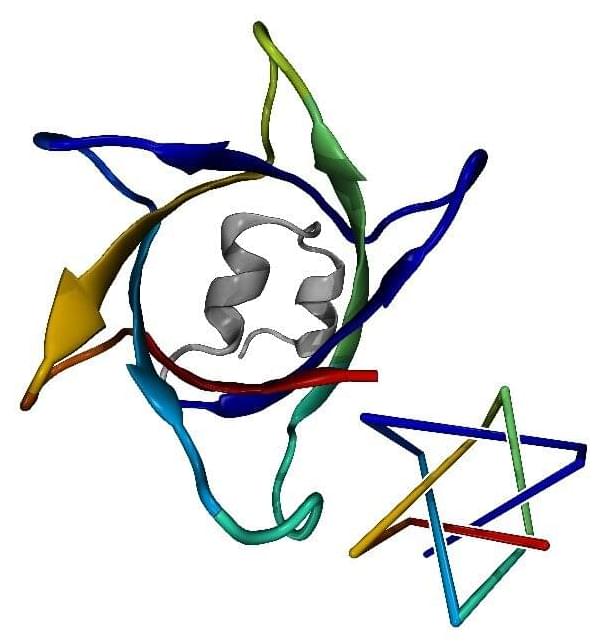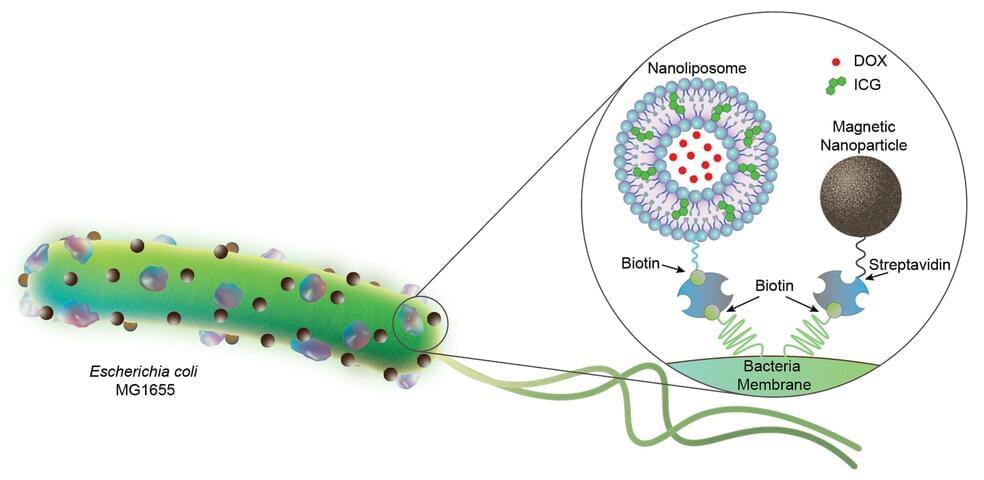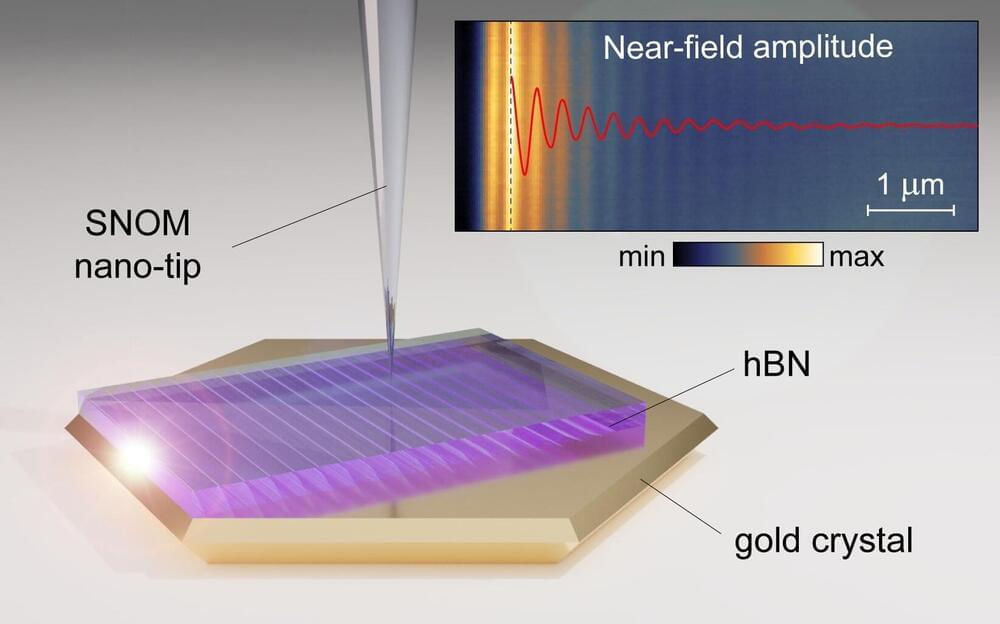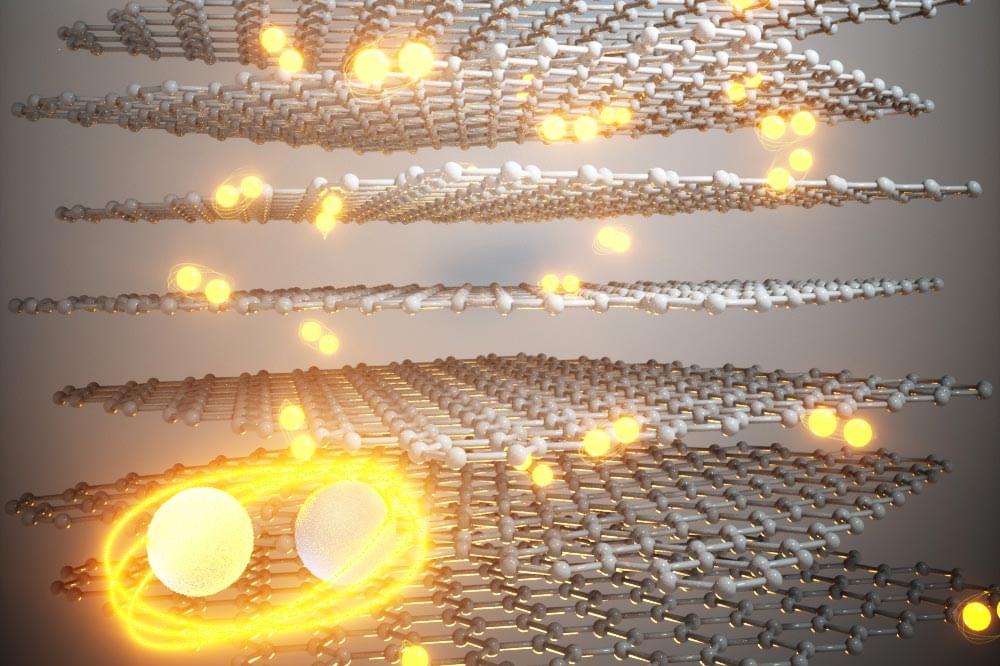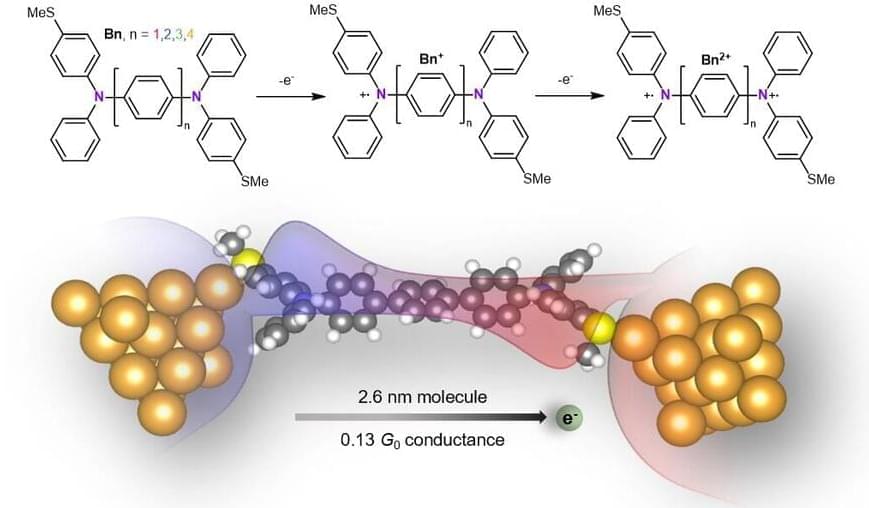Archive for the ‘nanotechnology’ category: Page 76
Jul 16, 2022
Physicists use AI to find the most complex protein knots so far
Posted by Shubham Ghosh Roy in categories: biotech/medical, chemistry, nanotechnology, robotics/AI
The question of how the chemical composition of a protein—the amino acid sequence—determines its 3D structure has been one of the biggest challenges in biophysics for more than half a century. This knowledge about the so-called “folding” of proteins is in great demand, as it contributes significantly to the understanding of various diseases and their treatment, among other things. For these reasons, Google’s DeepMind research team has developed AlphaFold, an artificial intelligence that predicts 3D structures.
A team consisting of researchers from Johannes Gutenberg University Mainz (JGU) and the University of California, Los Angeles, has now taken a closer look at these structures and examined them with respect to knots. We know knots primarily from shoelaces and cables, but they also occur on the nanoscale in our cells. Knotted proteins can not only be used to assess the quality of structure predictions but also raise important questions about folding mechanisms and the evolution of proteins.
Jul 15, 2022
Bacteria-based biohybrid microrobots on a mission to one day battle cancer
Posted by Saúl Morales Rodriguéz in categories: biotech/medical, chemistry, nanotechnology, robotics/AI
A team of scientists in the Physical Intelligence Department at the Max Planck Institute for Intelligent Systems have combined robotics with biology by equipping E. coli bacteria with artificial components to construct biohybrid microrobots. First, as can be seen in Figure 1, the team attached several nanoliposomes to each bacterium. On their outer circle, these spherical-shaped carriers enclose a material (ICG, green particles) that melts when illuminated by near infrared light. Further towards the middle, inside the aqueous core, the liposomes encapsulate water soluble chemotherapeutic drug molecules (DOX).
The second component the researchers attached to the bacterium is magnetic nanoparticles. When exposed to a magnetic field, the iron oxide particles serve as an on-top booster to this already highly motile microorganism. In this way, it is easier to control the swimming of bacteria —an improved design toward an in vivo application. Meanwhile, the rope binding the liposomes and magnetic particles to the bacterium is a very stable and hard to break streptavidin and biotin complex, which was developed a few years prior and reported in a Nature article, and comes in useful when constructing biohybrid microrobots.
E. coli bacteria are fast and versatile swimmers that can navigate through material ranging from liquids to highly viscous tissues. But that is not all, they also have highly advanced sensing capabilities. Bacteria are drawn to chemical gradients such as low oxygen levels or high acidity—both prevalent near tumor tissue. Treating cancer by injecting bacteria in proximity is known as bacteria mediated tumor therapy. The microorganisms flow to where the tumor is located, grow there and in this way activate the immune system of patients. Bacteria mediated tumor therapy has been a therapeutic approach for more than a century.
Jul 14, 2022
Nanotube-embedded coating detects threats from wear and tear in large structures
Posted by Shubham Ghosh Roy in categories: nanotechnology, transportation
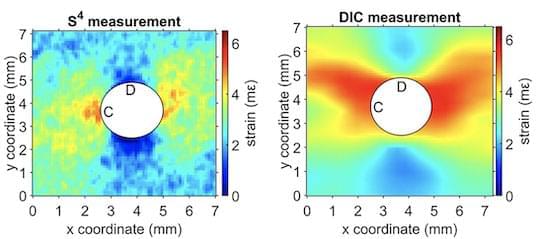
A strain-sensing smart skin developed at Rice University that uses very small structures, carbon nanotubes, to monitor and detect damage in large structures is ready for prime time.
The ‘strain paint’ first revealed by Rice in 2012 uses the fluorescent properties of nanotubes to show when a surface has been deformed by stress.
Jul 14, 2022
Strain-sensing smart skin ready to deploy
Posted by Saúl Morales Rodriguéz in categories: nanotechnology, transportation
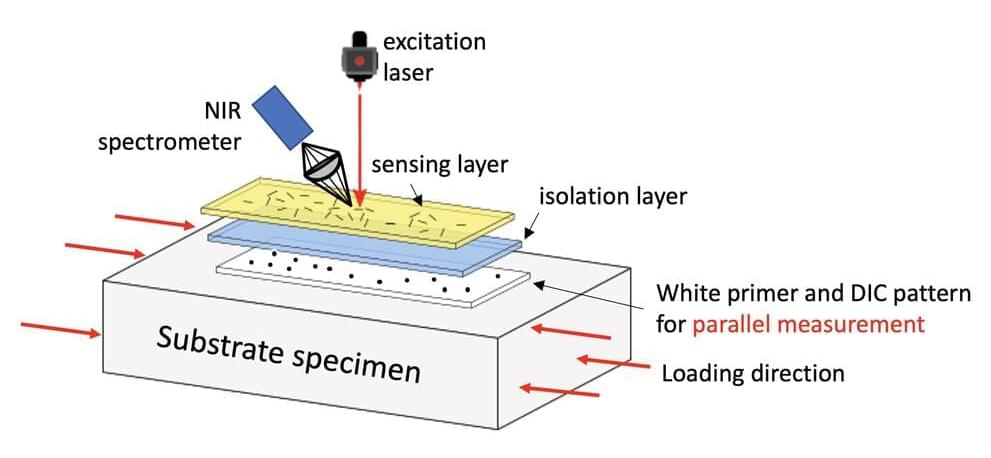
A strain-sensing smart skin developed at Rice University that uses very small structures, carbon nanotubes, to monitor and detect damage in large structures is ready for prime time.
The “strain paint” first revealed by Rice in 2012 uses the fluorescent properties of nanotubes to show when a surface has been deformed by stress.
Continue reading “Strain-sensing smart skin ready to deploy” »
Jul 13, 2022
Atomically-smooth gold crystals help to compress light for nanophotonic applications
Posted by Shubham Ghosh Roy in categories: materials, nanotechnology
Korea Advanced Institute of Science and Technology (KAIST) researchers and their collaborators at home and abroad have successfully demonstrated a new platform for guiding the compressed light waves in very thin van der Waals crystals. Their method to guide the mid-infrared light with minimal loss will provide a breakthrough for the practical applications of ultra-thin dielectric crystals in next-generation optoelectronic devices based on strong light-matter interactions at the nanoscale.
Phonon-polaritons are collective oscillations of ions in polar dielectrics coupled to electromagnetic waves of light, whose electromagnetic field is much more compressed compared to the light wavelength. Recently, it was demonstrated that the phonon-polaritons in thin van der Waals crystals can be compressed even further when the material is placed on top of a highly conductive metal. In such a configuration, charges in the polaritonic crystal are “reflected” in the metal, and their coupling with light results in a new type of polariton waves called the image phonon-polaritons. Highly compressed image modes provide strong light-matter interactions, but are very sensitive to the substrate roughness, which hinders their practical application.
Challenged by these limitations, four research groups combined their efforts to develop a unique experimental platform using advanced fabrication and measurement methods. Their findings were published in Science Advances on July 13.
Jul 13, 2022
MIT Physicists Discover a Family of “Magic” Superconducting Graphene Structures
Posted by Shubham Ghosh Roy in categories: nanotechnology, particle physics
The discovery could inform the design of practical superconducting devices.
When it comes to graphene.
Graphene is an allotrope of carbon in the form of a single layer of atoms in a two-dimensional hexagonal lattice in which one atom forms each vertex. It is the basic structural element of other allotropes of carbon, including graphite, charcoal, carbon nanotubes, and fullerenes. In proportion to its thickness, it is about 100 times stronger than the strongest steel.
Jul 13, 2022
Tiny motors take a big step forward
Posted by Saúl Morales Rodriguéz in categories: bioengineering, energy, nanotechnology, transportation
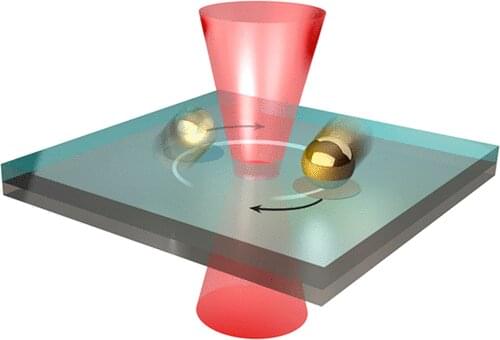
Motors are everywhere in our day-to-day lives—from cars to washing machines. A futuristic scientific field is working on tiny motors that could power a network of nanomachines and replace some of the power sources we use in devices today.
In new research published recently in ACS Nano, researchers from the Cockrell School of Engineering at The University of Texas at Austin created the first ever solid-state optical nanomotor. All previous versions of these light-driven motors reside in a solution of some sort, which held back their potential for most real-world applications.
Jul 11, 2022
“Brain” on a Chip — Toward a Precision Neuroelectronic Interface | Hongkun Park | TEDxKFAS
Posted by Dan Breeden in categories: bioengineering, biotech/medical, chemistry, cyborgs, nanotechnology, neuroscience, quantum physics
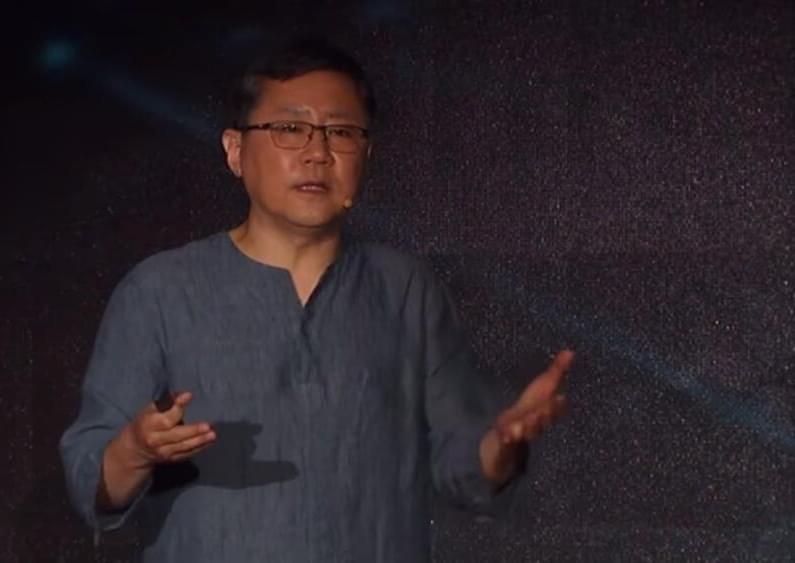
Brain-machine interfaces (BMIs) are devices that enable direct communication/translation between biological neuronal networks (e.g. a brain or a spine) and external machines. They are currently being used as a tool for fundamental neuroscience research and also for treating neurological disorders and for manipulating neuro-prosthetic devices. As remarkable as today’s BMIs are, however, the next generation BMIs will require new hardware and software with improved resolution and specificity in order to precisely monitor and control the activities of complex neuronal networks. In this talk, I will describe my group’s effort to develop new neuroelectronic devices enabled by silicon nanotechnology that can serve as high-precision, highly multiplexed interface to neuronal networks. I will then describe the promises, as well as potential pitfalls, of next generation BMIs. Hongkun Park is a Professor of Chemistry and Chemical Biology and a Professor of Physics at Harvard University. He is also an Institute Member of the Broad Institute of Harvard and MIT and a member of the Harvard Center for Brain Science and Harvard Quantum Optics Center. He serves as an associate editor of Nano Letters. His research interests lie in exploring solid-state photonic, optoelectronic, and plasmonic devices for quantum information processing as well as developing new nano-and microelectronic interfaces for living cells, cell networks, and organisms. Awards and honors that he received include the Ho-Am Foundation Prize in Science, NIH Director’s Pioneer Award, and the US Vannevar Bush Faculty Fellowship, the David and Lucile Packard Foundation Fellowship for Science and Engineering, the Alfred P. Sloan Research Fellowship, and the Camille Dreyfus Teacher-Scholar Award. This talk was given at a TEDx event using the TED conference format but independently organized by a local community.
Jul 11, 2022
Researchers build longest highly-conductive molecular nanowire
Posted by Dan Breeden in categories: chemistry, nanotechnology
As our devices get smaller and smaller, the use of molecules as the main components in electronic circuitry is becoming ever more critical. Over the past 10 years, researchers have been trying to use single molecules as conducting wires because of their small scale, distinct electronic characteristics, and high tunability. But in most molecular wires, as the length of the wire increases, the efficiency by which electrons are transmitted across the wire decreases exponentially. This limitation has made it especially challenging to build a long molecular wire—one that is much longer than a nanometer—that actually conducts electricity well.
Columbia researchers announced today that they have built a nanowire that is 2.6 nanometers long, shows an unusual increase in conductance as the wire length increases, and has quasi-metallic properties. Its excellent conductivity holds great promise for the field of molecular electronics, enabling electronic devices to become even tinier. The study is published today in Nature Chemistry.
